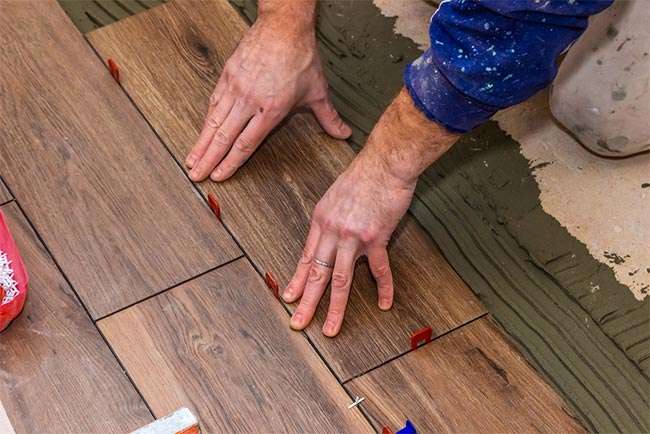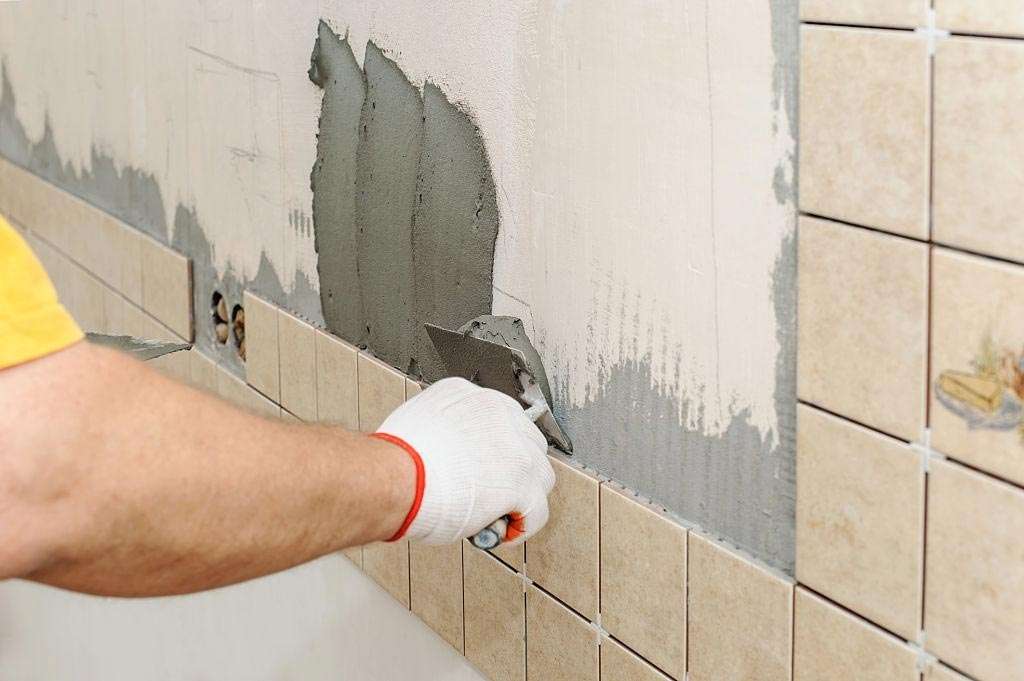Do you have an old bathroom that needs some new life? You can do so many things to give it a facelift, and tiling is by far the most popular choice.
If you’re still considering “What Is The Best Adhesive For Tiling Over Tiles”, we’ve got tips and tricks. You can find the suitable type and understand the pros and cons of laying tile over tile. Don’t miss out on this article if you want to hear about it!
Table of contents
What Is The Best Adhesive For Tiling Over Tiles?
For damp areas such as bathrooms, thin-set adhesive is ideal. Otherwise, you can use mastic for drier projects like kitchens. You’ll need to make sure whether your floor suffers from water penetration or not.
To begin installing your new flooring surface, use a trowel dipped into the appropriate bucket. It requires a thin layer on each section a few feet wide total distances between application points.
When laying tiles, don’t only spread the adhesive across one whole surface. It needs time for each piece of countertop to bond together! Trying to work on an entire room can cause dryness too soon and get you into trouble.
Instead, make sure your trowel has straight grooves along its edge. So when you apply, it can score against these pre-existing lines to promote drying and sticking.

Which is the best glue that you are looking for? You may find it among three options belonging to the thin-set category with different properties below.
Pre-mixed Adhesive
Without the need for mixing, the pre-mixed chemicals arrive ready in sealed tanks. They are available to use anywhere and anytime, so there’s no waiting around!
The quick-drying property only works best in smaller projects such as kitchen backsplashes or narrow spaces. Thus, although these are the simplest forms, the efficacy still depends on the purpose of use.
Thin-set Mortar Adhesive
This thin-set mortar is an easy-to-use powder package. Before application, you need to combine it with water to create a continuous, sticky mixture like mud.
Compared to the pre-mixed type, this substance makes stronger bonds to various surfaces. Hence, the application purposes are wider, from outside to inside. They have been stubborn for years and are popular across the world.
Epoxy Tile Adhesive
Among three types, epoxy tile glue is the strongest and most durable. These modified chemicals are suitable for both indoors and outdoors with no corrosion issues!
Furthermore, they can adapt to all kinds of industrial construction. It makes them ideal in every way possible for any project you can imagine.
You want to make sure you are using the right material for your project. If it’s not in the guideline, you may need other special versions for different finishes:
With Matt Finish tiles, Novatex Uni Nova is the most suitable glue to go with
To perform a Glossy Finish, you need to put more effort through two phases. It would be best if you painted The underlying floor with Novatex Optimus primer, then use TW60. TW60 is the conventional rubber-based modified product that can bind all the particles on the prepared surface.
Difference Between Standard Thin-set And Epoxy Tile Mortar Adhesive
There are many benefits to using thin-set mortar for floor tiles and other moist areas. Its water-resistant and high bonding strength features make it perfect, where normal grout might not work well at all!
With the durable and adjustable form of thin-set mortar, you can even apply them onto the strictest surfaces. It can also withstand high temperatures so that you won’t have any problem working in hot conditions with this product!
To use the Epoxy Glue Mortar, you must mix two or three components from separated packages in the combo.
Epoxy types are a lot faster than traditional thin-set ones. They need no extra latex at all. You can also use them for water-sensitive applications due to their waterproof characteristics.
If you are looking for the strongest material, then Epoxy is the right one for you. They are capable of the highest pressure for both inner and outer constructions.

What Are The Pros And Cons Of Tiling Over Existing Tiles?
The Pros
One of the best ways to get your floors looking like new again is by tiling over them. It’s much easier than dealing with all those pieces of broken previous ones and then having to reconstruct. It’s also time-saving, which means you can finish your project sooner!
Besides, it is more affordable than removing and replacing them. This solution helps you remove the need to pay someone else or rent any bulky and complex equipment. You can do your bathroom remodeling project by yourself!

The Cons
Although bricking above the original floor is a fantastic way to create more space and add an elegant look, there are certain drawbacks. One major concern would be the surface might become too high. They can inhibit getting in from doors or cupboards against one side before new brick installation.
The ground height may also pose problems for those who wish their toilet was standing not too tall from outside areas into the restroom. It isn’t only more dangerous in causing accidents, but also more uncomfortable as well.
Thus, this technique requires accuracy in the evaluation step to avoid any problems. Calculate the height of each door and cut it down. So that when combining them, you will have a smooth floor for a seamless transition across rooms. You can also use ramps at bathroom entrance ways or exit points where needed.
Tips To Put On Adhesive For Tiling Over Tiles
Clean The Existing Tiling
Over time, any debris, ground, oil wax layers inside will make all things become downgraded. Even if you use the best bricking glue ever, it’ll be useless for getting rid of new stains on old grout!
After you’ve finished removing all the excessive particles, what you need to do next is clean. This excellent supporting product from Forbo Eurocol – 014 Euroclean – can help you enhance the cleanup process, so that’s what we will use!
Level The Damage
Over-bricking is a great way to create beautiful and durable floors, but it can also damage the bad installation. When removing loose from old construction, there will always be gaps in your floor!
And that’s where the cement-based powder glues come into play.
Conclusion
With our explanation for “What Is The Best Adhesive For Tiling Over Tiles”, you now be able to find what you need! We’ve also listed some pros and cons of laying tile over tile, so make sure to read them before getting started on your next home decorating project. It’s time to make a new outlook for your space!
Thank you for reading. We are here if you have more questions about anything related to interior design. Let us know how we can help!
Last Updated on 4 years by admin


















